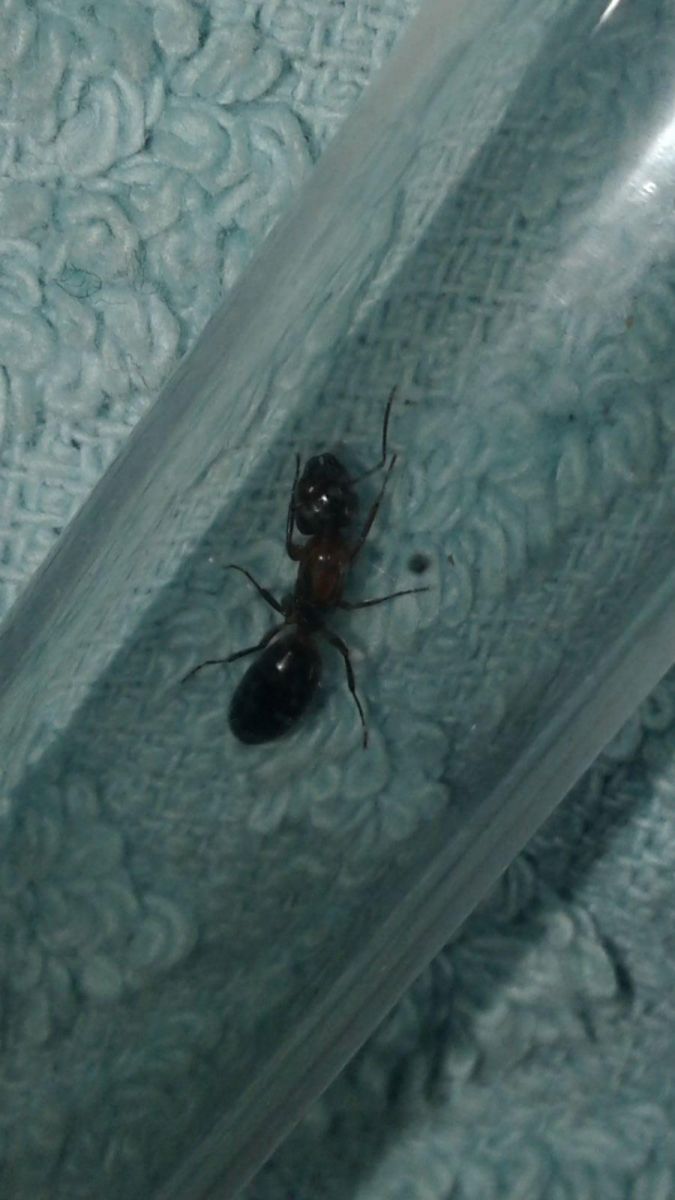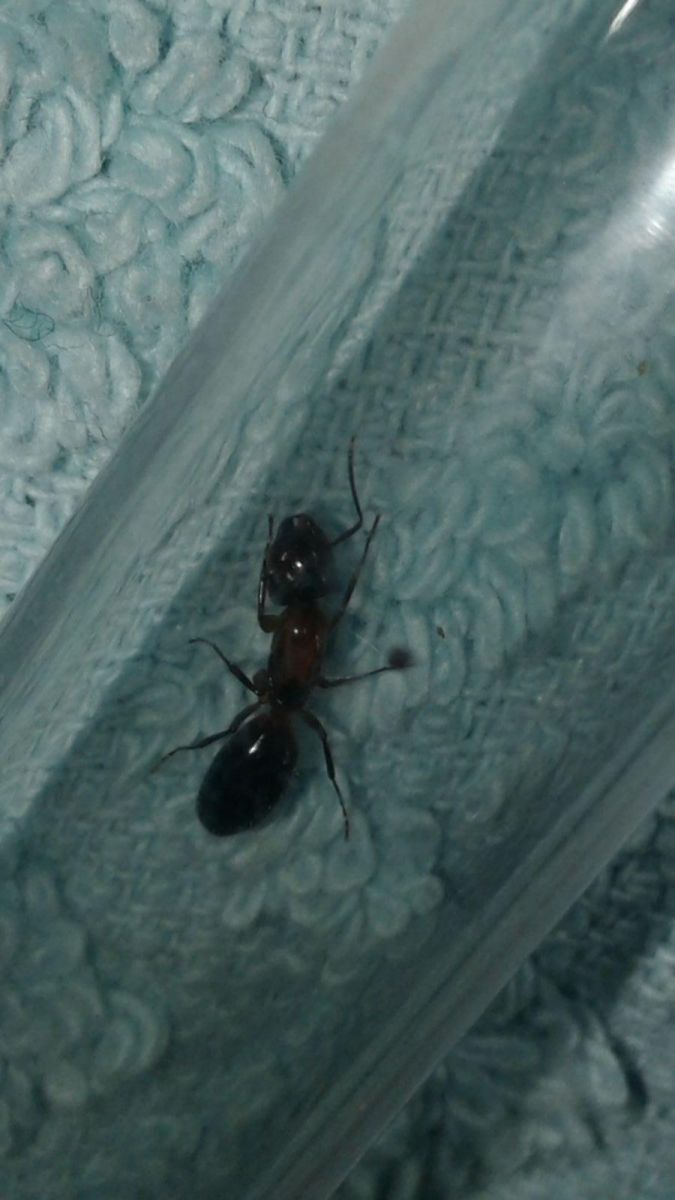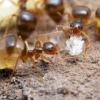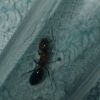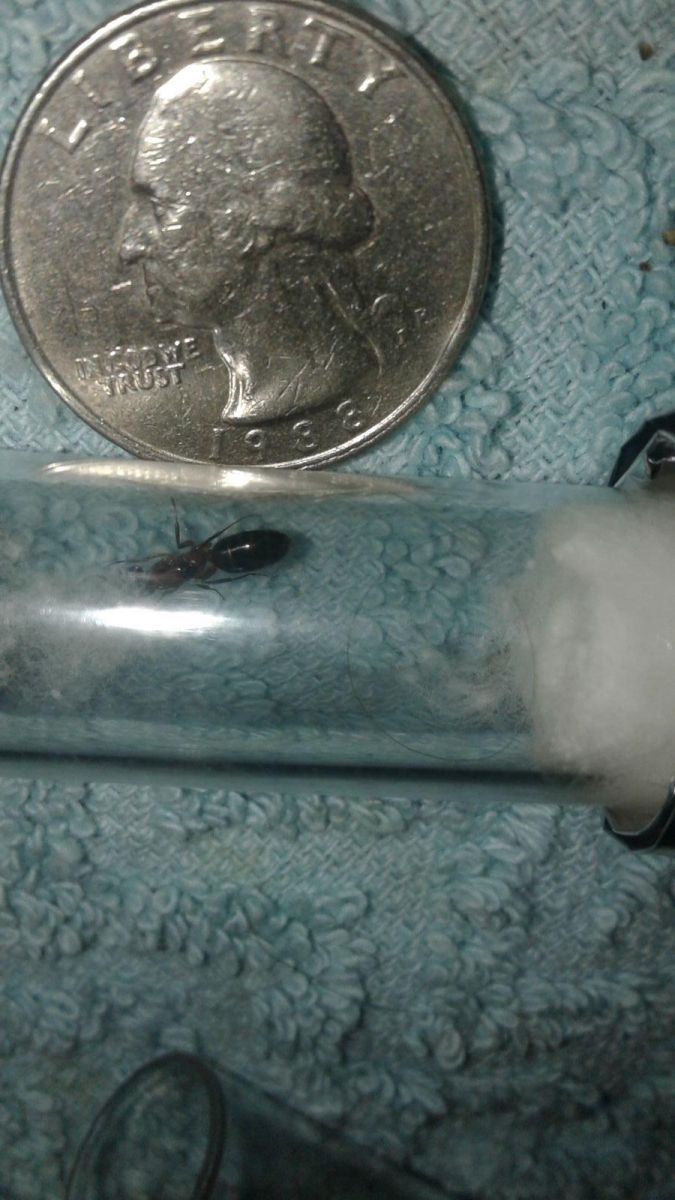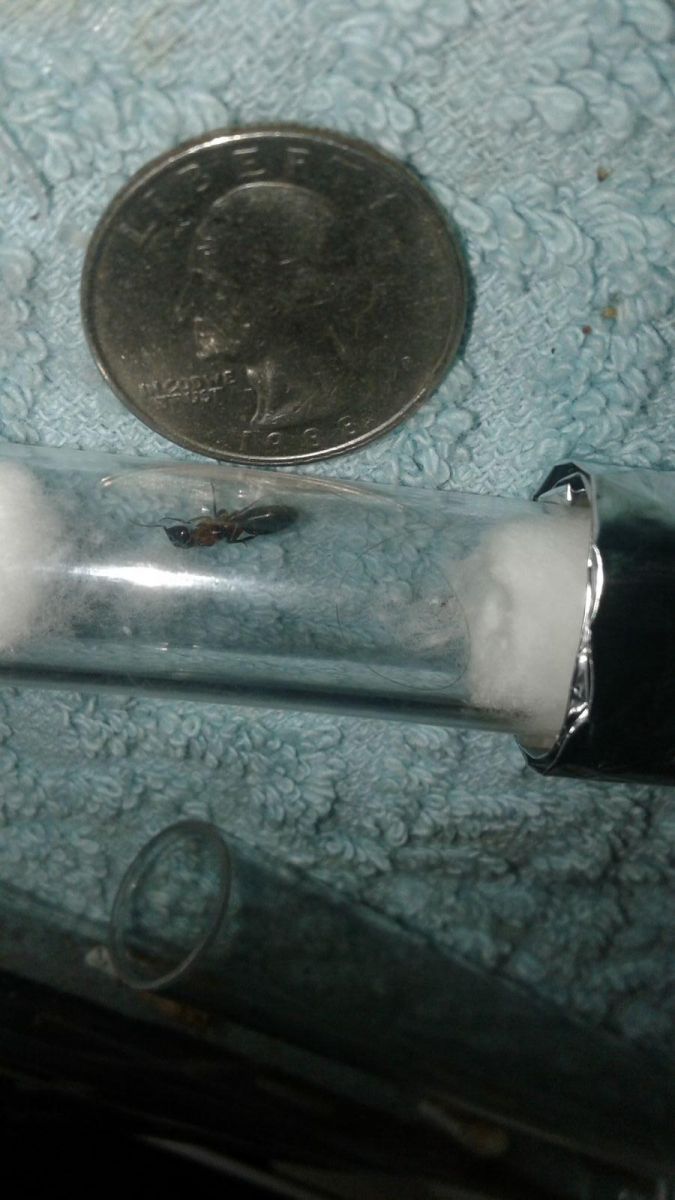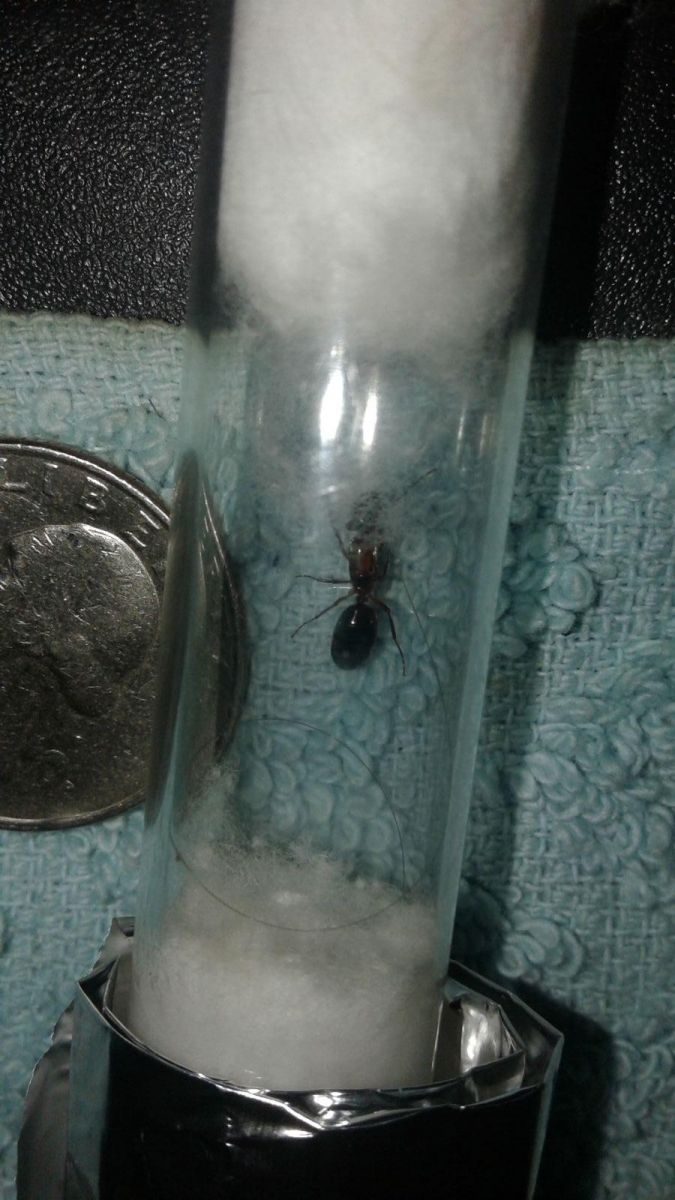Title:
1. Location (on a map) of collection (ie: city/town, state/province, country). Longmont Colorado, USA
2. Today's date 5/22/2018
Body:
1. Location of collection (ie: park/area, city/town, state/province, country) Rogers Grove Park, Near stream, on a rotting log.
2. Date of collection (more important for ID's of queens). 5/22/2018 roughly 230 pm
3. Habitat of collection On a rotting log
4. Length . i couldn't get a good measurement on it, it was fairly large though, maybe the tip of my pinky finger.
5. Coloration, hue, pattern and texture Dark black with redish brown midsection
6. Distinguishing characteristics the redish mark on the top of its midsection
7. Anything else distinctive (ie: odor, behavior, characteristics relative to others in the colony, etc.).
8. Nest description (if you can find the nest, and you're sure it belongs to the ant you collected) saw some similar Camponotus sp. around where i caught it.
9. Nuptial flight time, was few days after a rain so didn't see a nuptial flight.
